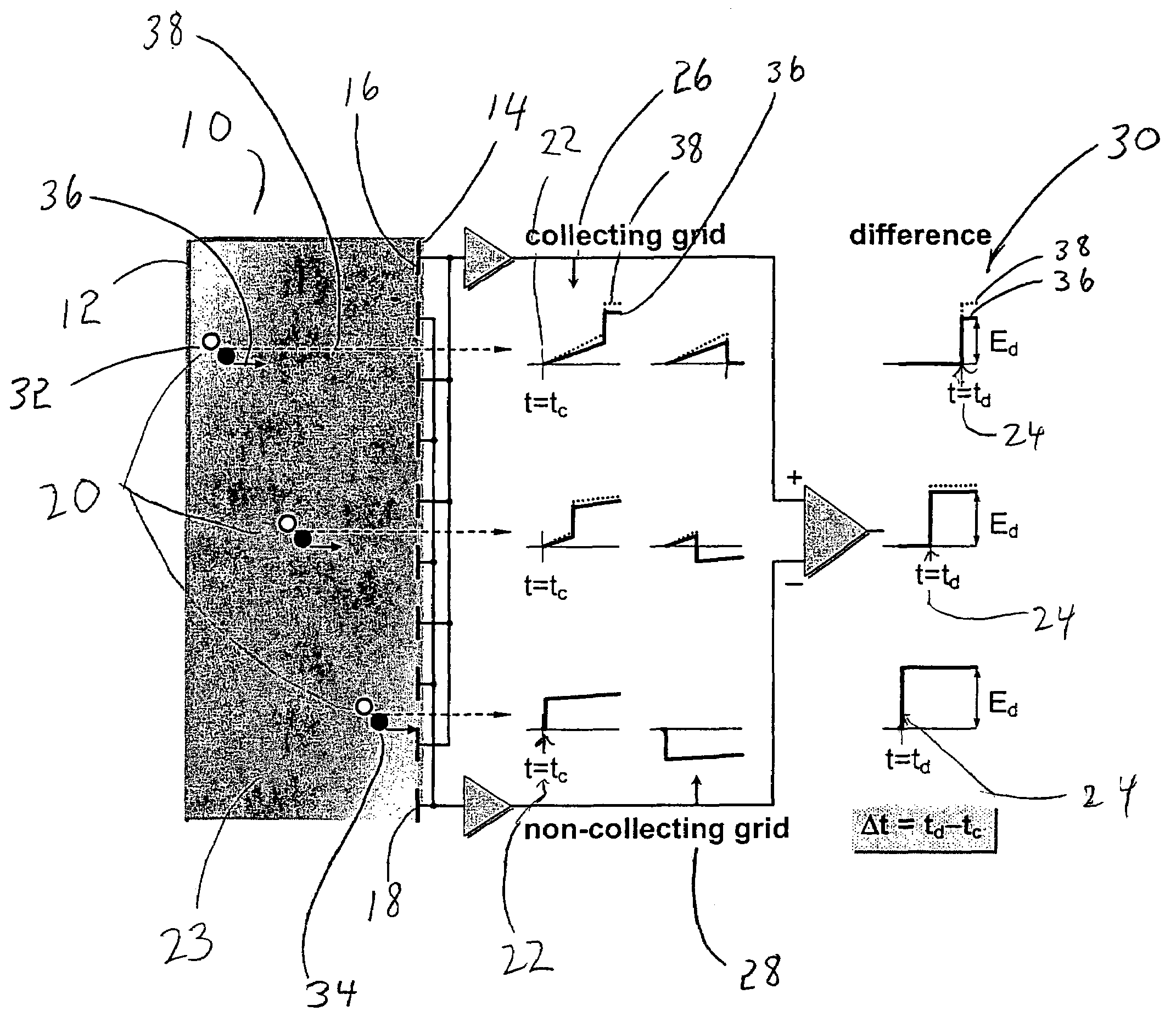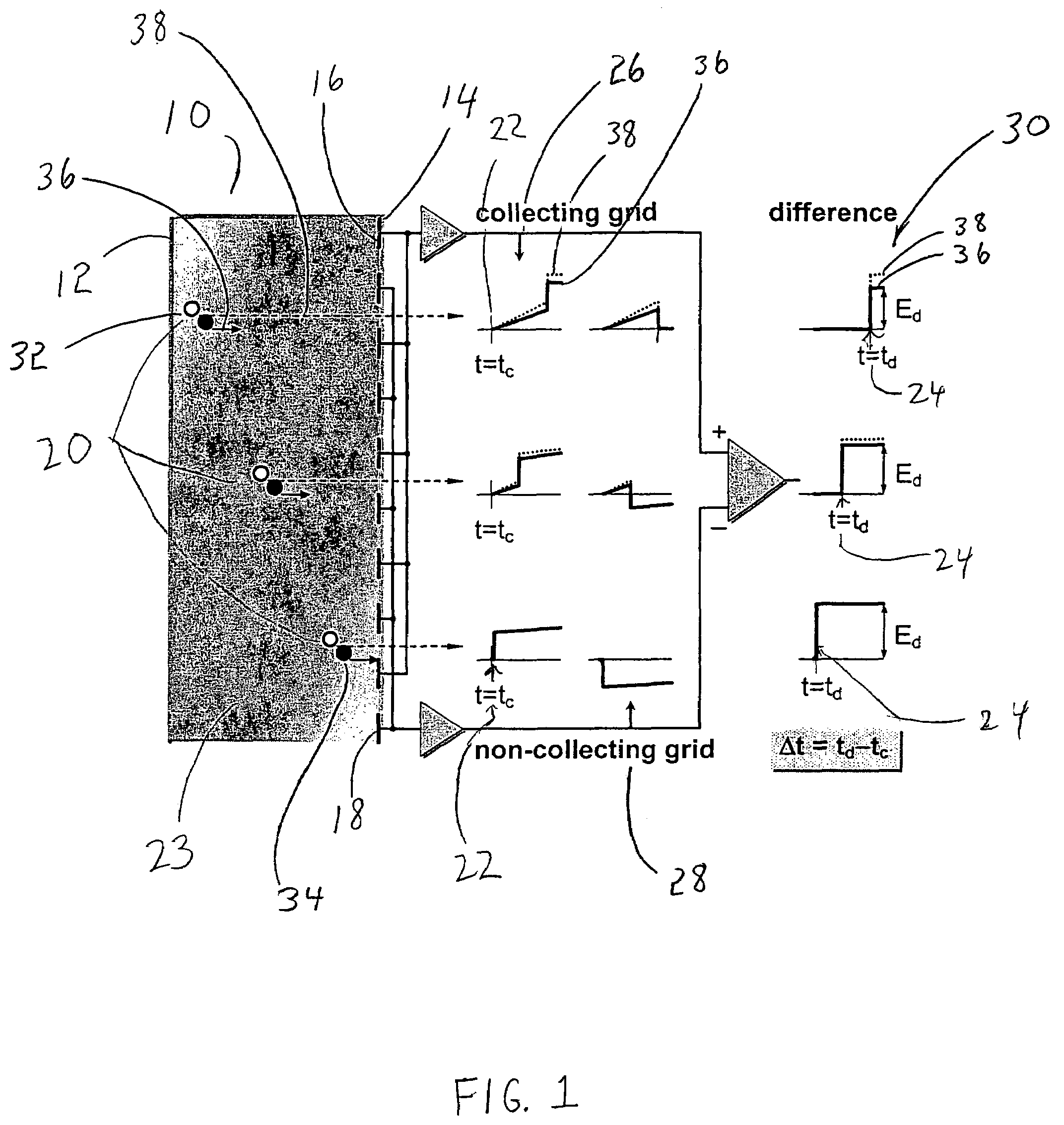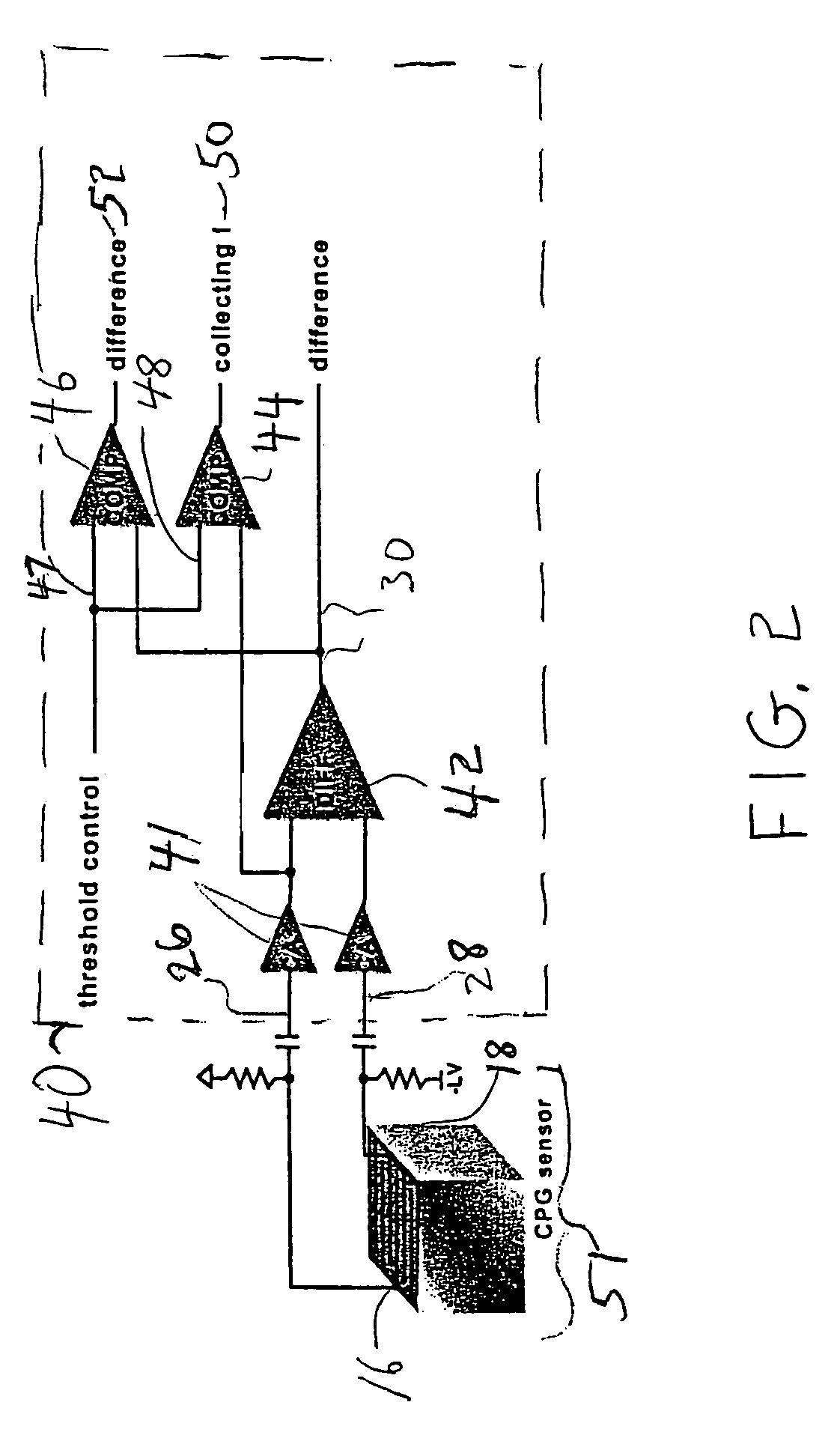Device and method for the measurement of depth of interaction using co-planar electrodes
a coplanar electrode and depth measurement technology, applied in the direction of x/gamma/cosmic radiation measurement, radiation control devices, instruments, etc., can solve the problems of reducing the resolution affecting the detection accuracy of conventional cpg sensors, etc., to achieve high spectral resolution and increase detection resolution
- Summary
- Abstract
- Description
- Claims
- Application Information
AI Technical Summary
Benefits of technology
Problems solved by technology
Method used
Image
Examples
Embodiment Construction
[0038]The present invention provides an efficient method and device for measuring the depth of interaction of ionizing radiation in co-planar electrode sensors, in particular, co-planar grid sensors, to increase resolution of detection. In addition, an efficient high spectral resolution device for detecting ionizing radiation at room temperature is provided.
[0039]Referring to FIG. 1, the present invention provides a method and device for measuring a depth of interaction of an ionizing radiation (e.g., gamma ray, x-ray, or neutron) event by using timing information from co-planar anode electrode signals only. Any co-planar electrode configuration, which includes at least one collecting anode and one non-collecting anode of suitable shape and dimension as known to those skilled in the art, may be used to provide the collecting and non-collecting signals. In a preferred embodiment shown in FIG. 1, the collecting anode is a collecting grid and the non-collecting electrode is a non-colle...
PUM
 Login to View More
Login to View More Abstract
Description
Claims
Application Information
 Login to View More
Login to View More - R&D
- Intellectual Property
- Life Sciences
- Materials
- Tech Scout
- Unparalleled Data Quality
- Higher Quality Content
- 60% Fewer Hallucinations
Browse by: Latest US Patents, China's latest patents, Technical Efficacy Thesaurus, Application Domain, Technology Topic, Popular Technical Reports.
© 2025 PatSnap. All rights reserved.Legal|Privacy policy|Modern Slavery Act Transparency Statement|Sitemap|About US| Contact US: help@patsnap.com



